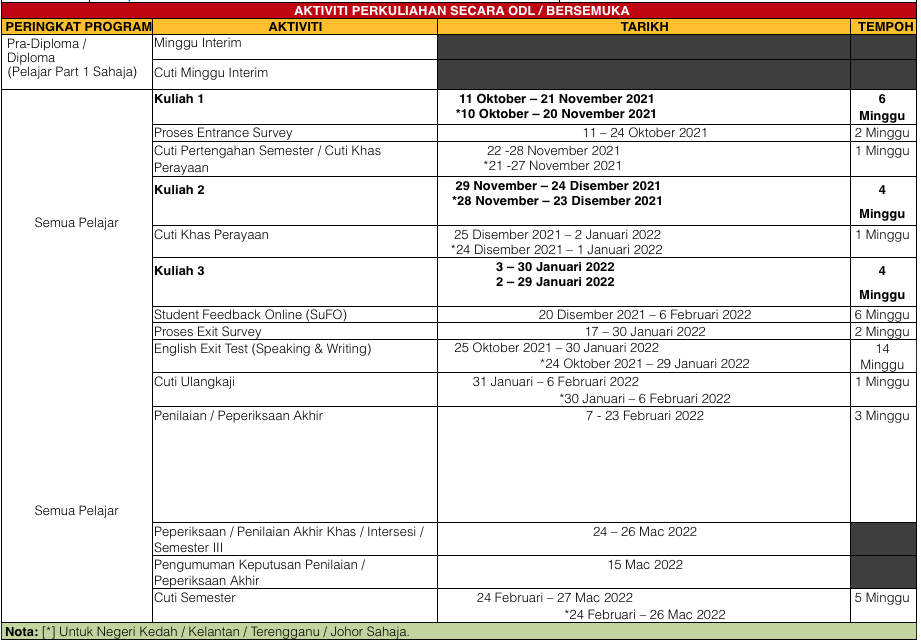This course introduces students to programming technologies for designing, building and publishing related to internet programming. It provides students with fundamental knowledge and techniques required to access device capabilities, current technologies and standards, operating system for Software Development Kit (SDK) and mobile programming. Upon completion, students should be able to create an efficient application for mobile devices.
At the end of the course, students should be able to:
- Construct practical skills in mobile programming
- Determine scientific skills in mobile programming
- Display leadership skills in managing a mobile programming project
Course Syllabus
| Topic | Remarks |
|---|---|
| WEEK 1 (11/10 – 15/10) Introduction to the course | Start Entrance Survey (11-24 October) Lecture ebooks: Ebooks |
| WEEK 2 (18/10 – 22/10) Chapter 1 – Introduction to Mobile Programming 1.1 Internet and networking 1.2 HTML, XML and CSS 1.3 Java 1.4 Mobile Apps architecture 1.5 Mobile Apps vs. Web Apps 1.6 Android vs. IOS | Lecture note 1: Introduction to Mobile Programming Lab 1: Installation and develop my first app |
| WEEK 3 (25/10 – 29/10) Chapter 2 – Android Operating Systems 2.1 History 2.2 Features 2.3 Version 2.4 Android architecture | End Entrance Survey Lecture note 2: Android Operating Systems Lab 2: XML and layout in Andriod |
| WEEK 4 (1/11 – 5/11) Chapter 3 – Android studio 3.1 Getting Started 3.2 First App 3.3 AndroidManifest File 3.4 Activities, Fragment, Services, Intent and UI Widgets 3.5 Layouts 3.6 Containers 3.7 Menu | Start Lab assignment – 30% Lecture note 3: Android studio Lab 3: UI view in Android |
| WEEK 5 (8/11 – 12/11) Chapter 4 – Developing Application I 4.1 UI Widgets 4.2 Data and Time 4.3 Toast 4.4 Containers 4.5 Menu | Lecture note 4: Developing Application I Lab 4: Android widgets |
| WEEK 6 (15/11 – 19/11) Chapter 5 – Developing Application II 5.1 Fragment and Intent 5.2 Notification 5.3 Material Design 5.4 Navigation | Lecture note 5: Developing Application II Lab 5: Andriod navigation |
| (22/11 – 26/11) | SEMESTER BREAK (CUTI PERAYAAN) |
| WEEK 7 (29/11 – 3/12) Chapter 6 – Mobile Database 6.1 Introduction 6.2 Database design 6.3 Database connection 6.4 Database access using SQL | Project briefing (Create groups) Submit lab assignment – 30% (5/12/2021) Start group project – 30% Lecture note 6: Mobile Database Lab 6: Android database(SQLite) |
| WEEK 8 (6/12 – 10/12) Test 1 – (20%) | Test 1 – (6/12/2021) (20%) Lab 7: Android database(MySQL) |
| WEEK 9 (13/12 – 17/12) Chapter 7 – Implementing CRUD 7.1 Login and Logout and registration 7.2 Add, Retrieve, Update & Delete Operations 7.3 Reporting 7.4 Searching | Project proposal submission (17/12/2021) Lecture note 7: Implementing CRUD Lab 8: SQLite CRUD |
| WEEK 10 (20/12 – 24/12) Chapter 8 – Testing and Publishing Apps 8.1 Mobile application and delivery 8.2 Testing mobile application 8.3 Application distribution | Start Student Feedback Online (SuFO) Lecture note 8: Testing and Publishing Apps Lab 9: Testing and publishing |
| (27/12 – 31/12) | CUTI KHAS PERAYAAN |
| WEEK 11 (3/1 – 7/1) Group project preparation | Lab 9: Project preparation |
| WEEK 12 (10/1 – 14/1) Group project preparation | Lab 10: Project preparation |
| WEEK 13 (17/1 – 21/1) Group project preparation | Start Exit Survey (17-30 January 2021) Start Exit Student Feedback Online (SuFO (20/12/2021 – 6/2/2022) Project preparation |
| WEEK 14 (24/1 – 28/1) Test 2 – (20%) | Test 2 – (26/1/2022) (20%) End Exit Survey End Exit Student Feedback Online (SuFO) Project preparation |
| (31/1 – 4/2) Group project presentation | Submit group project – 30% (31/1/2021) Group project presentation (3-4/2/2022) Study week |
SESI OKTOBER-MAC 2021



